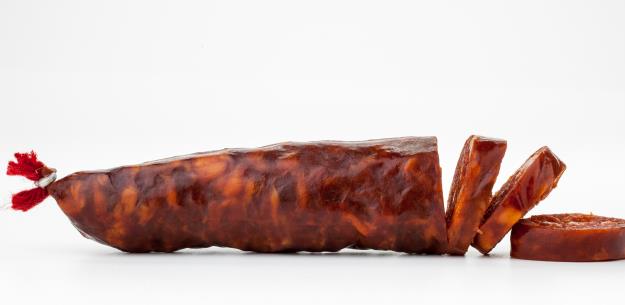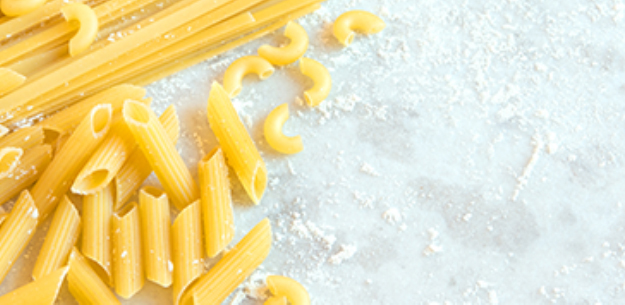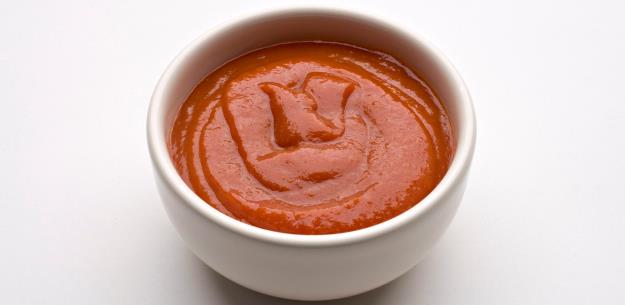.png.transform/rendition-xs/image_image%20(1).png)
"Macarrones con Chorizo", a Spanish Classic
Spanish chorizo is exported all over the world, as is this country's exceptional olive oil. Put them together and you have any number of gastronomic possibilities. Add some pasta, a finely-diced sofrito, and you have one of the most-beloved stars of the Spanish home kitchen: macarrones con chorizo
There are dishes that have the power to transport you to a special place and time. For many people, the most beloved of these are the ones that engender waves of nostalgia for their youth: the aromas wafting out of their mother's or grandmother's kitchen, a belly filled to contentment with warm food, a chilly day and a cozy plate of unparalleled nourishment. Given all of this, it's not surprising that these dishes are often referred to as comfort food, and in Spain, few dishes are as comforting as macarrones con chorizo.
With its principal elements of pasta and Spanish sausage, macarrones con chorizo (macaroni with chorizo) is neither a strictly traditional dish, nor a modern one. Rather, by all accounts, this humble recipe is an enduring favorite whose magic lies in its simplicity, nostalgia and endless variations.
Make it your own
Undoubtedly, the true protagonist of this dish and what makes it such a deeply important part of the Spanish culinary repertoire, is the chorizo – Spain's beloved pimentón-spiced pork sausage par excellence. Of course, in the same way that chorizo varies in style, preparation and even flavor, depending on the Spanish region of origin, the dish also changes depending on what type of sausage you use. Cooks may choose to make it with fresh, spicy, cured or smoked chorizo, as well as any number of other types of regional Spanish sausages including chistorra, picadillo, sobrasada, butifarra or morcilla.
On the pasta side of things, the smooth-sided macaroni that is typically used might be replaced with rigatoni, penne, spiraled fusilli or, in a pinch, spaghetti, and whether or not it is cooked al dente isn't really an issue – with varying degrees of hard to mushy pasta all being acceptable. A friend's grandmother from a small town in La Rioja, for example, discovered macaroni in the 1980s and cooked the pasta for a full 45 minutes – a sacrilege in Italy – "but it was incredible". Others opt to cook the pasta in tomato sauce rather than water, imbuing it with a more intense flavor.
In any case and by most accounts, the standard recipe consists of finely diced onion sautéed in extra virgin olive oil, to which diced chorizo and tomato are added. The beauty of this dish, aside from the robust flavor and aroma the chorizo gives off when fried in olive oil, is that – thanks to the popularity of Spanish chorizo on an international scale, as well as the near-universal availability of pasta – it is so easily exportable. Not only can emigrating Spaniards can make this beloved comfort food wherever they go but it's also easy for Spanish food lovers all over the world to recreate this authentic taste of Spain. And though typically considered a humble dish, home chefs need only melt a little grated PDO Manchego, Idiazabal, Castellano, Roncal or other type of firm Spanish cheese over the top, and pair the dish with a classic Spanish red from a region like DO Rioja, Ribera del Duero, Mencía or La Mancha, to have an unstoppable meal on their hands.
Although more than a decade has passed, I still remember the first time I saw macarrones con chorizo as a first course on a menu del día (menu of the day) at a Spanish restaurant. The dish seemed both too simplistic for a restaurant and too filling for a starter. But pushed by curiosity and the enthusiasm of my Spanish companions, I ordered it, and soon found myself devouring forkfuls of aromatic and slightly spicy chorizo, perfectly tempered by soft and yielding tubes of pasta. Each one had just the right amount of tomato and onion inside (and maybe a touch of very finely diced, fried red pepper), ready to explode on the tongue. And while I may not have a Spanish mother or grandmother, the first taste of this dish left me wishing I did.
There are dishes that have the power to transport you to a special place and time
Adrienne Smith/©ICEX



- Image1
- Image2
- Image3

